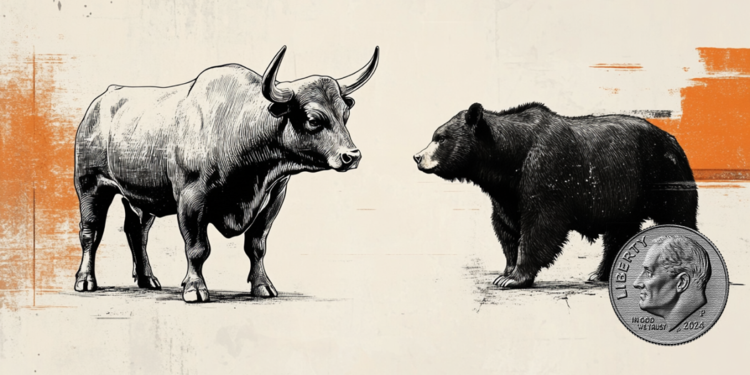US Dollar continues struggling and goes nowhere
- US traders keep watch on the Federal Reserve’s looming rate decision despite ongoing headlines about cuts.
- President Trump renews criticism of trade imbalances, sparking market chatter about new tax cuts and oil price demands.
- Solid US growth between 2.5% and 3.0% helps underpin the Greenback, though policy ambiguities weigh on sentiment.
- Jobless claims rise slightly, suggesting that labor market conditions remain resilient.
The US Dollar has turned flat during the US trading session on Thursday. US President Trump spoke at the World Economic Forum in Davos. The US Dollar Index (DXY) is back above 108.00, though it is facing some mild selling pressure again.
Daily digest market movers: USD sees red despite Trump hinting at tariffs for Canada and Mexico
- During his World Economic Forum appearance, President Trump restated that the US trade deficit with Canada is unsustainable and underscored his intent to seek deeper tariff measures if deemed necessary.
- He also proclaimed his commitment to slashing business taxes, pressuring OPEC to reduce oil prices and aiming to influence the Federal Reserve’s independence.
- New unemployment filings climbed to 223K for the week ending January 18, slightly above prior forecasts. The insured unemployment rate stands at 1.2% with continuing claims edging higher to nearly 1.9 million.
- Growth in the US economy remains robust at roughly 2.5%–3.0% annualized, powered by hiring gains that support consumption and keep inflation somewhat buoyant. Analysts widely expect the Fed to hold rates steady next week, seeing no compelling argument to cut soon.
- Kansas City Fed Manufacturing data is slated for release with the Services gauge following on Friday. Markets remain attentive to potential headwinds, but leading indicators suggest the US economy retains its underlying strength.
DXY technical outlook: Indicators struggle as the index fails to hold near 108.50
The US Dollar Index continues to fight off selling pressure but has yet to sustain gains beyond 108.50. Momentum signals, such as the Relative Strength Index (RSI), remain below the 50 threshold, indicating a weaker bias. The MACD’s red bars are expanding, hinting at growing bearish momentum.
The DXY stabilized around 108.20, though a lack of follow-through could lead to more downside. Without fresh catalysts to renew buying interest, the Greenback’s rebound may be short-lived, leaving it vulnerable to continued profit-taking.
Fed FAQs
Monetary policy in the US is shaped by the Federal Reserve (Fed). The Fed has two mandates: to achieve price stability and foster full employment. Its primary tool to achieve these goals is by adjusting interest rates. When prices are rising too quickly and inflation is above the Fed’s 2% target, it raises interest rates, increasing borrowing costs throughout the economy. This results in a stronger US Dollar (USD) as it makes the US a more attractive place for international investors to park their money. When inflation falls below 2% or the Unemployment Rate is too high, the Fed may lower interest rates to encourage borrowing, which weighs on the Greenback.
The Federal Reserve (Fed) holds eight policy meetings a year, where the Federal Open Market Committee (FOMC) assesses economic conditions and makes monetary policy decisions. The FOMC is attended by twelve Fed officials – the seven members of the Board of Governors, the president of the Federal Reserve Bank of New York, and four of the remaining eleven regional Reserve Bank presidents, who serve one-year terms on a rotating basis.
In extreme situations, the Federal Reserve may resort to a policy named Quantitative Easing (QE). QE is the process by which the Fed substantially increases the flow of credit in a stuck financial system. It is a non-standard policy measure used during crises or when inflation is extremely low. It was the Fed’s weapon of choice during the Great Financial Crisis in 2008. It involves the Fed printing more Dollars and using them to buy high grade bonds from financial institutions. QE usually weakens the US Dollar.
Quantitative tightening (QT) is the reverse process of QE, whereby the Federal Reserve stops buying bonds from financial institutions and does not reinvest the principal from the bonds it holds maturing, to purchase new bonds. It is usually positive for the value of the US Dollar.
Forex News
Keep up with the financial markets, know what's happening and what is affecting the markets with our latest market updates. Analyze market movers, trends and build your trading strategies accordingly.
